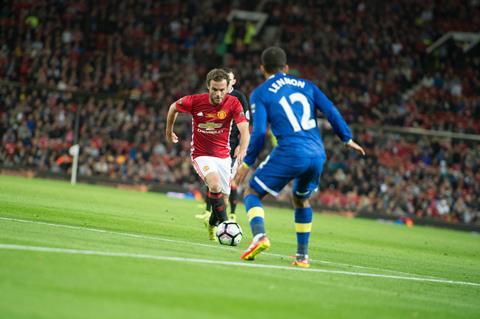Premium and niche sports fans have called on OTT services to provide streaming experiences with customised experiences, advertising and social media content but who will prevail and be crowned the Netflix of sports?

The sports broadcasting landscape is at a time of flux as content distribution models shift to meet consumer demands, new technology and monetisation models funnel this change into new directions.
Live sports have always captured the attention of audiences; according to Nielsen research eight out of 10 of the most viewed telecasts in 2019 were sports related.
Whilst many sports fans are already leveraging OTT services to provide access to their favourite sports leagues and teams, pay-TV providers rely heavily on fans to pay to watch the action.
As the worlds of sport, technology and streaming collide the changing viewing habits of sports fans and the services they want to stream has created a significant opportunity for platform providers.
Some 63% of sports fans would consider paying for a live sports streaming service if it offered more coverage of a sports league or team that interest them, according to recent research from Verizon Media.
- Read more: Scoring OTT goals with sports broadcasting
“We’ve always expected that live sports would become a pillar of streaming services,” Verizon Media vice president marketing Mary Kay Evans explained: “But the uptake has been breathtaking.”
In December of 2019 alone, Verizon delivered more than 1.3 billion unique live sessions for various sporting events in the US.
While on one of the busiest game days, it delivered 197 million unique user sessions in a 24-hour viewing period each with personalised monetisation opportunities through server-side ad insertion (SSAI).
Year-over-year, it is experiencing an average growth of 35% in concurrent peak viewers across all major leagues.
Verizon’s report Viewing Shifts: How We Watch Sport suggested that some fans are currently not getting what they want. Nearly 86% of sports fans expect streaming services to offer a different ad experience with over half at 54% expecting fewer adverts and 35% want access to replay control and 30% want the ability to skip ads.
Greater engagement
Over one in ten, 15% of audiences want to see social media viewing and posting controls incorporated into live sports viewing, while 24% want control over on-screen stats.
The research was conducted amongst 5,000 sports fans across the UK, US, France, Germany and Holland with one of its key findings highlighting the cost of streaming services has led to cancellations because content packages are not compelling enough.
Mainstream and niche sports fans alike agreed they like the flexibility and high-quality experience streaming gives them, with 39% using a particular service because they can consume the content on their smartphone and 32% opting to streaming live sports in 4K ultra high definition (UHD).
- Read more: Sports: Serving specialist audiences
Some 37% of respondents opted to stream live sports over-the-top (OTT) because it is a cheaper option than satellite or pay-TV packages.

Speaking to IBC365, PP Foresight analyst Paolo Pescatore says: “It is a great time for content creators as we are in a golden age of storytelling. There are so many services and platforms.
“However, this poses a monumental challenge as there are too many services for content creators to support. Standing out in a crowded and fragmented market is no easy feat.
“Therefore, there will be casualties. This suggests that platform players aggregating services will most likely survive.”
According to the survey results, there seems to be an opportunity to win new subscribers if they give fans more of what they want with more fans willing to spend on OTT services if they are being offered personalised content.
Streaming platforms have the advantage of harnessing better data and combined with deeper pockets compared to tradition competitors, the likes of DAZN and Eurosport Player, both with a base of subscribers are equally well placed to create a profitable model of sports aggregation to distribute on one platform across multiple territories.
However, the nature of broadcast rights cycles and market competition means the landscape is somewhat of a waiting game.
Pescatore adds: “While content is always king if users cannot access or watch live sport easily then it leads to a disastrous experience. Fans will think twice about continuing with their subscriptions.”
The power of personalisation
Essential to the multiscreen future is personalisation and “the notion of an all you can eat sports service sounds great,” Pescatore says: “There are traditional players moving into the streaming space and new pretenders like DAZN.
“However, new emerging players will struggle to make it financially viable given the huge investment in buying sports rights. They’re all fighting to be the Netflix of sports.”
Verizon found that negative customer experiences around live sports streaming were driven by three principle problems including buffering, latency and picture quality.
Verizon Media general manger media platform Ariff Sidi explains how important an easy to navigate user-interface (UI) is.
“A strong UX streamlines and minimises the investment users have to make in navigating an application to reach the content they are looking for.
“Consumers are becoming more demanding of UX that empower them and less accepting of those that add friction to their experience, making strong execution here imperative for not only customer retention but also increased engagement. Viewers who have a positive experience are more likely to remain loyal to a service.”
- Read more: Voice control set to transform UX
As consumers shift to digital platforms, there is an opportunity for programmers to evolve their offerings to meet viewer needs so they can win and retain live sports viewers on their platforms.
With more than four out of five consumers surveyed expecting streaming services to offer different and less interruptible ad experiences with avid sports fans prepared to receive more integrated commercial messaging.
Some 33% said they would expect streaming services to offer a different ad experience than what is delivered on traditional TV, whole 29% said they’d expect personalised or targeted ad offers to differentiate the services with 54% wanting fewer ad breaks.

Sidi told IBC365 that “several companies” including ESPN+ and Fubo are innovating with aggregation to better serve fans.
He explains: “There is so much sports content available globally that there is quite a bit of room for such innovation and for platforms to offer new sports products to audiences underserved by traditional distribution.”
Today, audiences crave the ability to buy select teams in a package, however that option is not broadly available today. Pointing to the Bleacher Report, which offers Champions League games on a per game basis, “making it easy for a fan to watch what they want without feeling like they are getting locked into some larger agreement that they would not take full advantage of,” Sidi adds.
The study’s findings complemented a survey carried out by Australian agency Quantum Market Research last year, which found that 96% of UK football fans would use a personalised TV channel if it was offered, and would be willing to pay an additional £14.30 per month on top of their existing subscription.
It also found that 90% of viewers are now using a second screen while watching live sports. The most common reasons for are to engage with friends at 45%, use social media 45%, access real-time game data 44%, or to search for statistics 43%, according to the survey.
Sidi says: “The M&A landscape actually provides new opportunities for both content creators and platforms. As large media companies absorb smaller ones, it leaves room for alternative platforms to find ways to set themselves apart - ways that may not be possible under the umbrella of much larger organisations.”
It is yet to be decided who will lead the sports aggregation offering a package of games and personalised content like the Netflix of entertainment, however, as start-up companies historically challenge the status quo and drive innovation perhaps the leader is yet to enter the market.
He explains: “For content creators, the industry consolidation is leading to increased competition for unique and exclusive content.
“There is considerably more funding and a greater number of outlets for distribution available to creators now than there have ever been. These outlets could be major platforms delivered by well-known brands or new ones.”
- Read more: Online piracy: OTTs battling back



























No comments yet